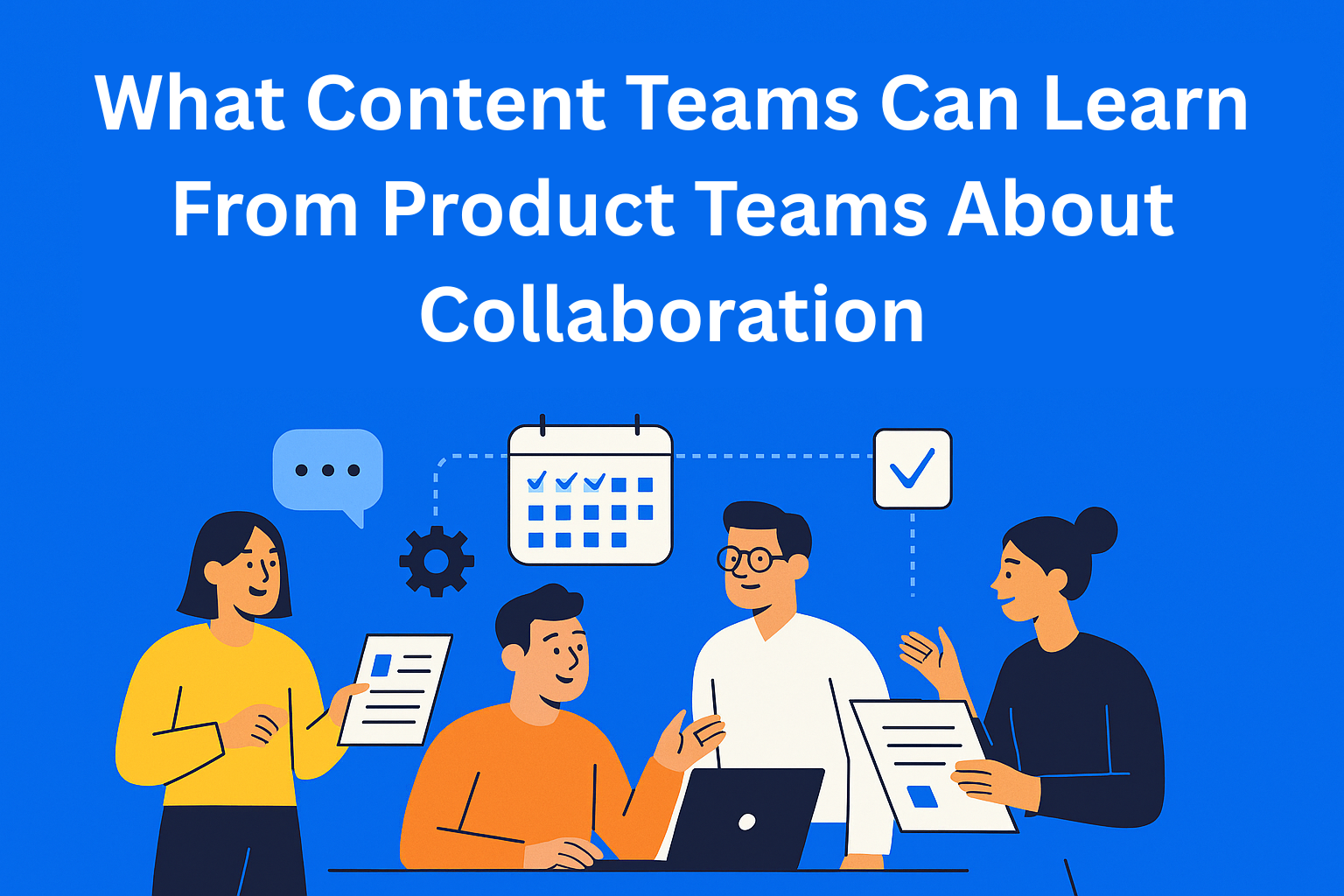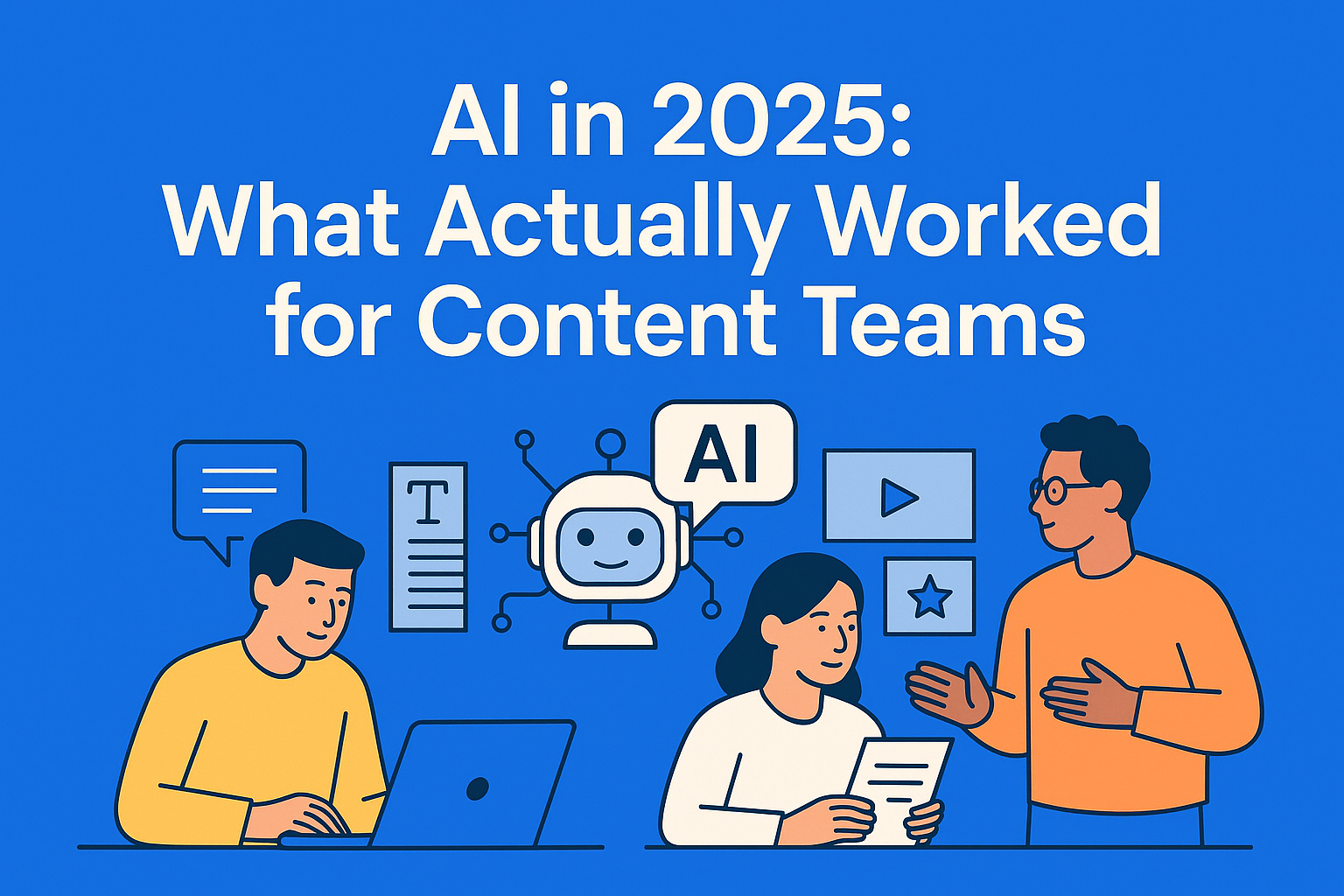Content Strategy for B2B vs. B2C: Key Difference
Discover the key differences between B2B and B2C content strategy, from audience targeting and content formats to SEO tactics and performance tracking. Learn how to optimize your strategy for real business impact, whether you’re creating for companies or consumers.

A good content strategy is becoming more important than ever for the success of any business. Whether you're targeting other companies (B2B) or regular consumers (B2C), it’s essential that the content you create is meaningful, useful, and strategically planned.
Still, many content teams wonder how much B2B and B2C strategies really differ and the answer is: a lot.
Why make the distinction? Because everything is different, from who you’re targeting, to the goals, to how you communicate and where you publish content. In the following sections, we’ll explain these differences in detail, with a special focus on SEO, defining the target audience, content formats, and performance measurement.
Key Takeaways
- B2B and B2C audiences behave differently - B2B buyers are logic-driven and slow; B2C buyers are emotional and fast.
- Content goals vary by model - B2B aims for lead generation and authority, while B2C focuses on brand awareness and sales.
- Formats must match the intent - B2B favors long-form content (case studies, whitepapers); B2C favors visuals, short videos, and storytelling.
- Tone and frequency differ - B2B is formal and less frequent; B2C is relaxed, energetic, and often daily.
- SEO strategy must follow search intent - B2B targets long-tail, informational keywords; B2C goes for broad, high-volume terms.
- Success is measured differently - B2B looks at qualified leads and demo requests; B2C tracks engagement and sales impact.
- Tools like EasyContent support both models - They help manage roles, approvals, and consistent delivery across teams.
- Customization is key - Tailor your approach to your audience type, goals, and content channel strategy.
Understanding the Audience: B2B vs. B2C
The biggest difference between B2B and B2C content strategies lies in who you're speaking to.
In B2B marketing, content is aimed at people in companies - managers, directors, and experts, who make carefully considered decisions, mostly based on facts and long-term goals.
On the other hand, B2C content targets regular buyers who often make decisions impulsively and based on emotions - what they like, what entertains them, or what they currently need.
In the B2B world, the buying process is slower. People first research, compare options, and then decide, which often takes weeks or even months. That’s why B2B content needs to provide specific information, useful insights, and be educational.
In B2C, it’s the opposite, content often aims to quickly grab attention, inspire or entertain, and push the user to act right away.
That’s why it’s important to create a profile of the ideal client. For B2B, this involves a deeper understanding of the person’s role in the company and their business goals. For B2C, the focus is more on everyday habits, interests, and desires of end users.
Content Marketing Goals
The goals we set in a content strategy depend on whether we’re targeting companies or end consumers.
For B2B, the main goal is to attract high-quality business leads – those who are seriously interested in our products or services. This is usually achieved through content that demonstrates expertise, such as case studies, guides, technical blogs, and whitepapers. In this process, platforms like EasyContent can be helpful because they make collaboration and quality control within content teams easier.
B2C marketing, on the other hand, focuses more on brand awareness, increasing sales, and building customer loyalty. Here, content that evokes emotion, inspires or entertains works best, such as brand stories, engaging videos, and visually attractive posts.
In B2B strategy, it’s important to act as an authority, someone who understands the audience’s problems and offers smart solutions. In B2C communication, content needs to be interesting, tailored to users’ needs, and immediately offer some value – whether that’s helpful advice, a good discount, or something fun.
Dominant Content Types
B2B content marketing mostly relies on:
- Whitepapers and eBooks
- Long blog posts that solve complex problems
- Webinars and online courses
- Case studies and data-based infographics
These formats help build trust with the audience and showcase expertise. They’re also useful for SEO optimization of B2B websites because they allow for the use of precise keywords and good internal linking. Tools like EasyContent further simplify the work of teams, especially when content needs to be reviewed and approved multiple times before publishing.
On the other hand, B2C brands use:
- Video content (short clips, TikTok, Instagram Reels)
- Lifestyle blog posts
- UGC (user-generated content)
- News and updates with storytelling elements
For a B2C strategy, content distribution via social media and email marketing needs to be fast, appealing, and consistent.
Frequency and Tone of Communication
B2B communication is usually more serious and slower. The tone is businesslike, uses technical terms, and focuses on specific benefits and return on investment. Teams creating B2B content should maintain a professional tone but avoid too many technical details so as not to lose readers.
In B2C content, the tone is more relaxed, it can be fun, humorous, or even a bit provocative, depending on the brand. B2C brands often publish content several times a day, while B2B companies usually post once or twice a week, but with much more informative content in each post.
SEO Strategies in B2B and B2C Content Marketing
When it comes to SEO strategy, B2B and B2C approaches differ significantly in terms of search intent. B2B users are looking for specific information, tools, solutions to business problems. That’s why the focus is on long-tail keywords, such as “Top 10 Content Marketing tools.”
For B2C users, searches are shorter and more focused on products, experiences, or trends. High-volume keywords (“best running shoes,” “vegan recipes”) dominate. SEO optimization for B2C must also include visual content, such as ALT tags for images and rich snippets.
For both types of audiences, technical SEO (site speed, mobile responsiveness, URL structure) remains a foundation for success. Also, good internal linking and optimized meta descriptions increase CTR and time spent on the site.
Measuring Success
The success of a content strategy is measured through different KPIs. In the B2B world, the most common metrics are:
- MQL and SQL (Marketing and Sales Qualified Leads)
- Number of eBook and whitepaper downloads
- Number of scheduled demo presentations
In B2C strategy, the focus is on:
- Engagement metrics (comments, likes, shares)
- ROAS (Return on Ad Spend)
- CTR on newsletter campaigns
- Community growth and loyalty
Tools like Google Analytics 4, Ahrefs, HubSpot, and SEMrush help track SEO results, while EasyContent makes content organization and team collaboration easier. These tools help you clearly see what really works with your B2B or B2C audience. It’s important to regularly track results and adjust your strategy based on the data.
Conclusion
Although B2B and B2C content strategies share some similarities, like the importance of quality content and knowing your audience well, there are clear differences in tone of communication, goals, channels, and SEO approach. B2B is slower, more in-depth, and more educational. B2C is faster, more direct, and relies more on emotion.
For content teams, it’s essential to know who they’re targeting and adapt the entire strategy to the audience, from keyword selection to the type of content. Success comes through constant testing, monitoring results, and adjusting tactics. Whether you're working for a SaaS platform or an online store.
If you want your content strategy to deliver results, make a clear distinction between the needs of B2B and B2C audiences and tailor your content to directly support your business goals.






